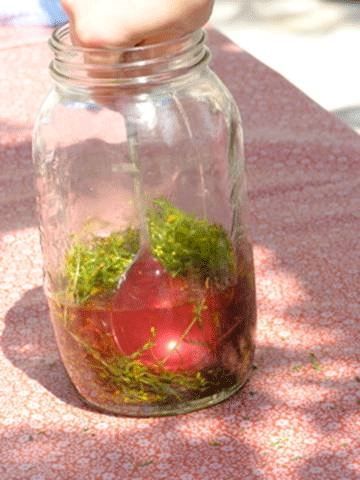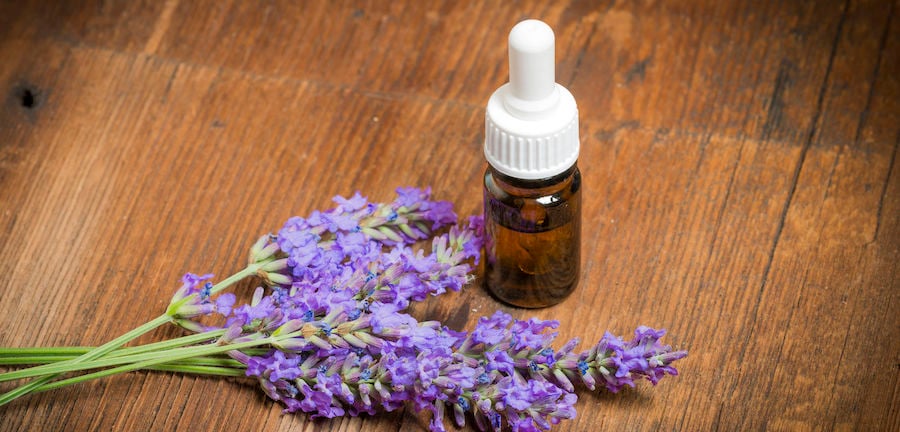Are the holidays already stressing you out? Don't panic! Just go to your herbal medicine cabinet and reach for your tinctures. What?!? You don't have any? Never fear ... we're here to help! Herbal tinctures are a staple in our herbal medicine cabinet, and an easy DIY project you can do at home. If you're unfamiliar with tinctures, you can think of them as the concentrated liquid form of herbs - lots of bang for your buck! (And if you want to make martinis with your lavender "tincture," we won't judge...)
By Dorene Petersen, Erika Yigzaw, and Lauren Shapiro
Before you get started, here's a little background on herbal tinctures to keep in mind:
- You can tincture any part of the herb, including the roots, leaves, flowers, or seeds.
- Tinctures extract an herb’s chemical constituents using alcohol, vinegar, or vegetable glycerin.
- Alcohol is most effective and most commonly used, but vinegar can be used as a replacement, especially when making tinctures for kids.
- The type of alcohol used will depend on the intended use of the herbal preparation. Any herbal preparation that will be used orally must use ethyl alcohol, the type found in vodka. Isopropyl (rubbing alcohol) or methyl alcohol (wood alcohol) may be used for topical preparations only as these forms of alcohol are toxic if taken internally.
- Vegetable glycerin can also be used but remember that it does not extract as many constituents as alcohol.
- Tinctures can be stored for extended periods of time. Alcohol-based tinctures will last indefinitely, while tinctures made with apple cider vinegar can last for about six months.
- Different botanicals require different alcohol concentrations to extract their active constituents. For example, yarrow (Achillea millefolium) only requires 60% alcohol for a tincture. If you have 90% alcohol, you can certainly use this, but to save money, you can dilute it 30% with distilled water and still be sure you are extracting the active constituents.
- Alcohol that is above 75% alcohol content extracts the constituents more quickly.
- Vodka, which is usually 40%, works just as well for herbs that require a lower concentration of alcohol. You can use it for herbs that require 50% alcohol, but you may want to leave it a little longer than two weeks.
- In some states, you cannot purchase pure grain alcohol. If that applies to you, use vodka or similar. Some herbalists have prepared tinctures with white rum, brandy, or even sake!
Let's get started! The basic tincture recipe is:
- 1-oz dried powdered or chopped herb or 2-oz fresh
- 1-pt alcohol such as vodka or even cider vinegar
Mix your herb with your alcohol or apple cider vinegar in a glass jar with a tight-fitting lid, such as a canning or preserving jar. Keep the tincture in a tightly-closed jar in a warm spot (but not in the sun), for approximately two weeks. Shake the tincture 2-3 times every day. After two weeks*, strain the tincture through pharmaceutical filter paper, a coffee filter, cheesecloth, or muslin. You may need to strain your tincture 2 or even 3 times to remove all of the herb solids. Leaving solids in your tincture may lead to mold and spoilage. Store your tincture in a dark bottle or cupboard.
Half a pint of tincture should equal the medicinal potency of 1 ounce of the fresh herb, so approximately 1 teaspoon will equal the medicinal strength of 1 cup of infusion. A typical recommended dose is small, approximately 20-40 drops three times a day, although this varies with each herb. Dilute the 20-40 drops in approximately ¼ cup of water to take.
See ... tinctures are easy to make and quick to use, which makes them an herbal medicine cabinet must have! Plus, for non-tea lovers, tinctures are a great alternative to get the medicinal benefit of herbs! AND, tinctures can be used topically in water for bathing wounds, soaking feet, in the bath, or as a household disinfectant!
Just one more thing to keep in mind ...
If you use fresh herbs to prepare a tincture, double the quantity of dried herbs so you are using 2 ounces for every 1 ounces of dried herb called for in your recipe. An alternative formula is to add one part herb to five parts of alcohol.
Want to learn more, but looking for less of a commitment? Watch this ACHStv YouTube video on infusions featuring ACHS President Dorene Petersen. An infusion is steeped like an herbal tea, but is stronger, and unlike a tincture, an infusion should be used immediately.
Questions? Further tips? Recipe suggestions? Feel free to post a comment. We'd love to hear from you!
*The consensus is that the minimum time to extract herbs into a tincture is two weeks, and the maximum time is three months. Extraction time also depends on the plant material and the percentage of alcohol needed. Most above ground plant parts only need about 40% alcohol and will extract very quickly. Tougher roots and rhizomes typically need a higher percentage of alcohol and longer time to extract.
Note, tinctures are fantastic, but they can't stop criminals in their tracks. And, this information has not been reviewed by the FDA. This information has been presented for educational purposes only and is not intended to treat, diagnose, cure, or prevent disease. Always consult with your primary care physician or naturopathic doctor before making any significant changes to your health and wellness routine.




